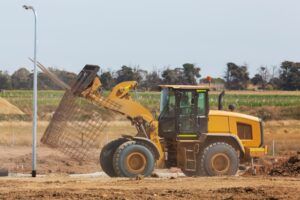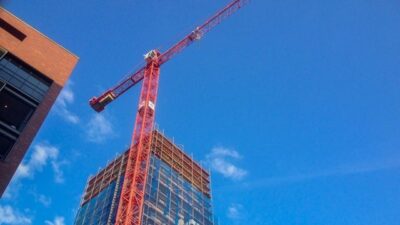Investing in commercial construction is a big decision—one that can shape your financial future for decades. Whether you’re planning an office building, retail space, or multi-tenant property, the choices you make today will impact your bottom line for years to come.
Here’s the thing: most people focus solely on upfront construction costs. But smart investors? They look at the bigger picture. They think about operational expenses, maintenance needs, and long-term value. That’s what separates a good investment from a great one.
Foundation Systems and Ground Preparation
Choosing the Right Foundation Type
Your foundation is literally what everything else sits on, so getting this right matters—a lot. The foundation you choose affects your timeline, your budget, and how well your building performs over its lifetime.
Traditional concrete foundations work well in many situations, but they’re not your only option. Depending on your site conditions, you might consider alternatives that save time and money. For instance, when you’re dealing with difficult soil or remote locations, helical pile systems can be game-changers. They install quickly, work in challenging terrain, and don’t require concrete curing time.
The cost varies widely based on your specific situation. Factors like soil stability, building load requirements, and site accessibility all play into the equation. Understanding screw pile cost compared to other foundation options helps you make informed decisions early in the planning phase. Some projects save thousands by choosing the right foundation type for their specific conditions.
Site Assessment Before Breaking Ground
Before you pour a single foundation, you need to know what you’re working with. A proper geotechnical survey might feel like an unnecessary expense, but it’s actually cheap insurance against expensive surprises down the road.
Soil conditions can make or break your budget. Clay soils expand and contract. Sandy soils may need extra support. Rocky terrain presents its own challenges. Each situation requires a different approach, and knowing what’s beneath the surface lets you plan—and budget—accordingly.
Timelines matter too. Some foundation methods take weeks; others take days. When you’re paying for financing, permits, and project management, every day counts. Choose a foundation system that matches both your site conditions and your schedule.
Site Development and Environmental Considerations

Managing Terrain Challenges
Not every commercial site comes flat and ready to build. In fact, most don’t. Slopes, drainage issues, and unstable ground are common challenges that require thoughtful solutions.
Grading and excavation costs can surprise you if you’re not prepared. Moving dirt is expensive, especially when you need to bring it off-site or haul in clean fill. Sometimes it makes more sense to work with your site’s natural contours rather than fighting against them.
Environmental regulations also come into play. Local authorities want to see your plan for managing stormwater runoff, protecting nearby waterways, and preventing sediment from leaving your site. Meeting these requirements isn’t optional—it’s part of responsible development and staying on the right side of permit requirements.
Preventing Soil Displacement During Construction
Here’s something many developers overlook until it becomes a problem: soil erosion during construction. Rain doesn’t wait for your project to finish, and exposed soil can wash away quickly, creating sediment problems and potential fines.
Smart developers address this proactively. Temporary erosion control measures protect your site and keep you compliant with environmental regulations. Solutions like silt fences, sediment basins, and proper grading help, but sometimes you need more robust protection, especially on slopes or during extended construction timelines.
This is where products like erosion mat systems come into play. These materials stabilize soil, promote vegetation growth, and prevent displacement even during heavy rain. While they represent an upfront cost, they’re far cheaper than dealing with erosion damage, failed inspections, or project delays. Plus, they often stay in place permanently, continuing to protect your landscaping and drainage systems long after construction ends.
The cost-benefit analysis is straightforward: spending a few thousand on proper erosion control beats paying tens of thousands to fix problems later. It also keeps your project on schedule, which in commercial construction, is often worth more than the direct cost savings.
Building Envelope and Energy Infrastructure
Roofing Systems for Commercial Properties
Your roof does more than keep rain out—it’s a major component of your building’s energy efficiency and long-term maintenance costs. Commercial roofing materials range from traditional built-up systems to modern single-ply membranes, each with different lifespans and cost profiles.
When selecting roofing materials, think beyond the installation price. A cheaper roof that needs replacement in fifteen years costs more over time than a premium system that lasts thirty. Factor in warranty terms, maintenance requirements, and energy performance.
Also consider what might go on that roof later. More commercial buildings are adding equipment like HVAC units, telecommunications gear, and solar arrays. Make sure your roof structure can handle current loads plus potential future additions. Retrofitting structural support later is expensive and disruptive.
Renewable Energy Integration
Speaking of roofs, let’s talk energy. Solar infrastructure has become increasingly common in commercial construction, and for good reason—it can significantly reduce operating costs while adding value to your property.
The best time to plan for solar is during initial design, not after construction. Structural considerations, electrical routing, and equipment placement all become simpler and cheaper when integrated from the start. Even if you’re not installing panels immediately, designing your building to accommodate them later gives you flexibility.
Consider your roof orientation, shading from nearby structures, and local utility rates. In some markets, solar installations pay for themselves within a few years through energy savings and incentive programs. In others, the timeline is longer. Run the numbers for your specific location and building use.
Operational Planning and Lifecycle Costs

Budgeting for Ongoing Maintenance
Here’s where many commercial property owners get caught off guard: operational costs. Your building doesn’t stop requiring attention once construction ends. Systems need regular servicing, components wear out, and facilities require ongoing care.
Create a maintenance reserve fund during your initial investment planning. A common guideline is setting aside one to two percent of your building’s replacement value annually for maintenance and repairs. This fund covers routine servicing plus unexpected issues that inevitably arise.
Different building systems have different maintenance cycles. HVAC systems need annual servicing. Roofing requires periodic inspections. Parking lots need resealing. And yes, those solar panels you installed? They need attention too. While solar systems are relatively low-maintenance, they still require cleaning, inspection, and occasional repairs to maintain peak performance.
If you’re in regions with significant solar installations, like Australia, you’ll find specialized services for system maintenance. For example, property managers often work with providers offering Solar Panel Repairs Melbourne and similar services to keep renewable energy systems running efficiently. Regular maintenance prevents small issues from becoming expensive problems and ensures your energy savings stay on track.
Asset Management Strategies
Smart property owners don’t just react to problems—they prevent them. Preventive maintenance costs less than emergency repairs, and it keeps your tenants happier by avoiding disruptive breakdowns.
Consider implementing a computerized maintenance management system, even if you’re starting with just one building. These tools help you track maintenance schedules, manage vendor relationships, and spot patterns before they become problems. When your HVAC technician notices the same compressor working too hard three visits in a row, you can replace it proactively rather than waiting for a summer breakdown.
Documentation matters too. Keep detailed records of all maintenance, repairs, and upgrades. This information becomes valuable when selling the property, refinancing, or simply planning future budgets. It also helps new facility managers understand your building’s history and needs.
Making Informed Investment Decisions
Evaluating Total Cost of Ownership
Let’s bring this all together. The cheapest option during construction is rarely the cheapest option over time. Total cost of ownership includes your initial investment plus decades of operational expenses, maintenance costs, and eventual replacement needs.
Energy efficiency deserves special attention. An extra fifty thousand spent on high-performance windows and insulation can save you far more than that in reduced utility bills over twenty years. Better HVAC systems cost more upfront but less to operate. Quality materials last longer and require less maintenance.
Also consider resale value. When it’s time to sell, buyers look at more than just asking price—they evaluate operating costs, deferred maintenance, and system condition. A well-maintained building with efficient systems commands premium pricing and sells faster than one with neglected infrastructure.
Working with Experienced Contractors
Finally, your choice of construction partners matters enormously. The lowest bid often signals problems, not savings. Experienced contractors understand the complexities of commercial construction and help you avoid costly mistakes.
Look for contractors with relevant commercial experience, solid references, and proper licensing and insurance. Ask about their approach to quality control, change order management, and project communication. The right partner protects your investment through expertise and attention to detail.
Contract structure also matters. Fixed-price contracts offer budget certainty but less flexibility. Time-and-materials contracts provide flexibility but require careful oversight. Discuss options with your contractor and legal advisor to find the right fit for your project.
Conclusion
Commercial construction investment isn’t just about building something—it’s about building something that performs well financially for years to come. From choosing the right foundation to planning for ongoing maintenance, every decision shapes your return on investment.
Focus on the big picture. Balance upfront costs with lifecycle value. Choose quality over shortcuts. And remember, the cheapest option today often becomes the most expensive one tomorrow. With thoughtful planning and strategic investments, your commercial construction project can deliver strong returns for decades.
FAQs
What factors most significantly impact commercial construction budgets?
Site conditions top the list—challenging soil, drainage issues, or steep terrain can quickly inflate costs. Material choices, labor availability, and regulatory requirements also play major roles. Planning for these factors early helps prevent budget surprises.
How can I reduce long-term operational costs in my commercial building?
Invest in energy-efficient systems during construction, choose durable materials that require less maintenance, and implement preventive maintenance programs. These upfront investments typically pay for themselves within a few years through reduced utility bills and repair costs.
When should renewable energy systems be integrated into construction plans?
As early as possible—ideally during the initial design phase. This allows for proper structural planning, optimal equipment placement, and coordinated electrical work. Even if you’re not installing panels immediately, designing the building to accommodate them later provides valuable flexibility.
What site preparation steps are most critical for project success?
Thorough geotechnical surveys, proper grading and drainage planning, and effective erosion control measures form the foundation of successful projects. These steps prevent costly surprises during construction and protect your investment from environmental damage. Cutting corners on site preparation almost always costs more in the long run.
View the original article and our Inspiration here


Leave a Reply